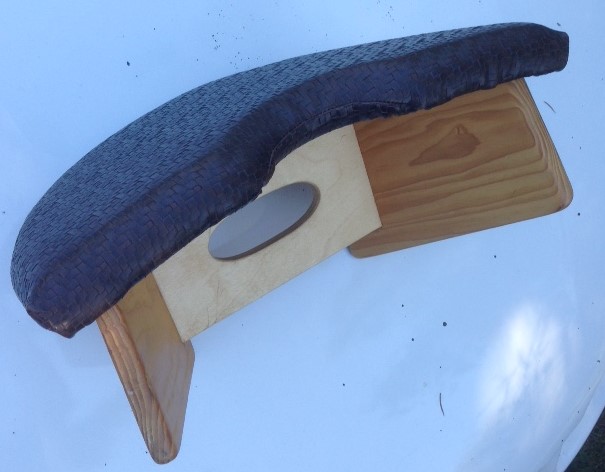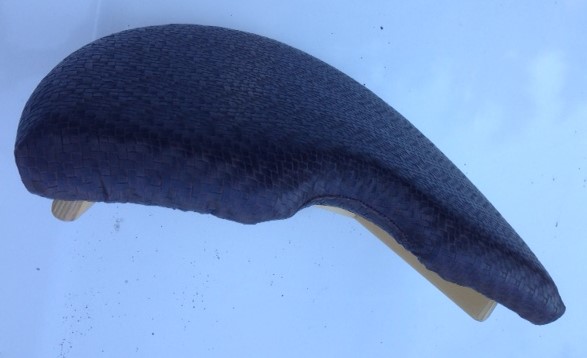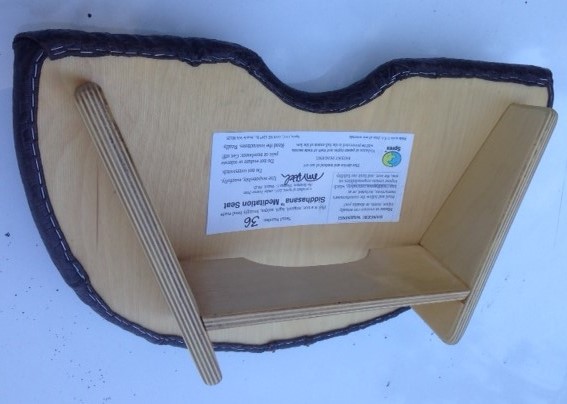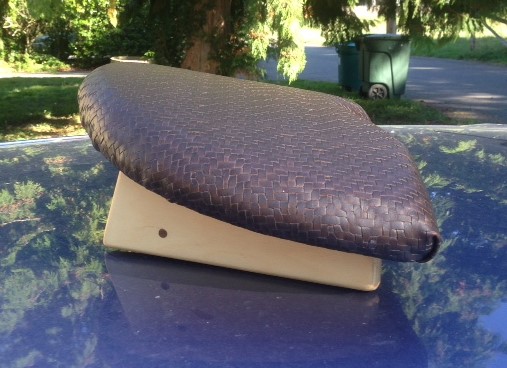The Rise and Fall of American Posture, David Yosifon and Peter N. Stearns, The American Historical Review, Vol. 103, No. 4 (Oct., 1998), pp. 1057-1095

|
Siddhasana™ Meditation Seat & The History of Posture |
| |||
 |  |  |  |
|
|
A Hundred Years of Bad PostureOnce upon a time, from formal portraits of the wealthy from ancient ages to photographs of American pioneers and families from the 1800s, people generally carried themselves with excellent posture. A straight back. Head above the shoulders rather than in front of the chest."Straight-backed" had the connotation of honesty, uprightness in business and personal interactions, and possibly of careful observance in matters of religion. Around the 1920's, however, posed photographs show people of fashion and circumstance now in no longer straight but dramatically slouched postures, and the fashion and culture of the day gave prestige and social value to the flapper girl with the long cigarette holder and the slouching, swaying posture, with the head tilted to the side. Society changed, and bad posture became fashionable. It was a battle. but the battle was lost.
The history of this change is described in a fascinating article,
available at JSTOR.org, an
academic resource website:
The Rise and Fall of American Posture, David Yosifon and Peter N. Stearns, The American Historical Review, Vol. 103, No. 4 (Oct., 1998), pp. 1057-1095 Through social change and spread of innovations of social habits, just like the spread of language changes across the social and geographic strata of society, slouching posture spread throughout society. Nowadays, parents have stopped even asking their kids to "Sit up straight!" Few vestiges of the old emphasis and strict observance of erect posture remain in society: the army, some religious groups. That's about it. People don't really know what it was about. So the argument was indeed lost. People don't tell their children to sit up straight any more. So why ever did they?
Bad Reasons for Good PostureTom Veatch says he used to think that the old focus on upright posture was because of an excessive need for social control and a superficial emphasis on how a person looks. Parents might tell their children to wipe their mouth and straighten up both for the same reason, for what you look like to others.And indeed one can see in others immediately how their posture looks. Empathy means experiencing for ourselves what we see the other experiencing, and this ability of ours enables us not just to feel the smile on others' faces but also to see the inner effects of their good posture. If you see someone tall and open in their posture, you can immediately and directly empathize with what it must feel like to be in that posture. So that was a temptation to parents and sergeants and religious authorities, to tell people how to be in their posture, because it looks better to have better posture. But that is a bad reason; we shouldn't do it for others, but for ourselves. The new argument, our argument, is that good posture is not just about looking good for others. It is a matter of inner experience, inner emotional and cognitive energy level, and indeed of one's access to bliss. Perhaps a tall straight posture was once particularly acknowledged to be a good thing by those emotionally intelligent or religious folks who put value on inner experience, because there was something to it! And we think there is still something to it.
It's called Good for a ReasonThe famous Alexander Technique of F. M. Alexander brought to the world the insight that our posture carries not just a way of holding the body but also a related way of feeling emotionally, and often negative consequences even to the point of incapacitation. Alexander himself would get laryngitis when he took on the posture and voice of the acting roles he played, and that personal experience started his whole life project.Thus a whole tradition and lineage of Alexander Technique teachers are working, around the world, to improve people's posture, and thereby improve their functioning and their experience of life. Posture relates to your functioning and efficiency, your emotional life, how it feels to be who you are. It's not just the mechanics of some bones that can bend different ways. We're with them. In fact, we believe that posture can produce bliss. Here's why:
Can Posture can produce Bliss?Tom Veatch recently wrote the following paragraphs in a letter to his meditation teacher when he offered her the first two production units of the Siddhasana™ Meditation Seat. They were a gift of gratitude for her meditation posture instructions which inspired the search that led to the Siddhasana™ Meditation Seat. Tom wrote:How does this relate to the Siddhasana™ Meditation Seat? The posture trick also happens for many people while sitting on it. People that sit on them say things like "My focus has increased". We believe this is something that can change the entire world. And that everyone should try it. The first Siddhasana™ Meditation Seat ever offered for sale was sold in June, 2013. Tom's mother got a bargain, paying about half of our cost of materials. From such humble beginnings, let us aim for the stars.
Copyright (C) 2012-2020, Thomas C Veatch. All Rights Reserved. |